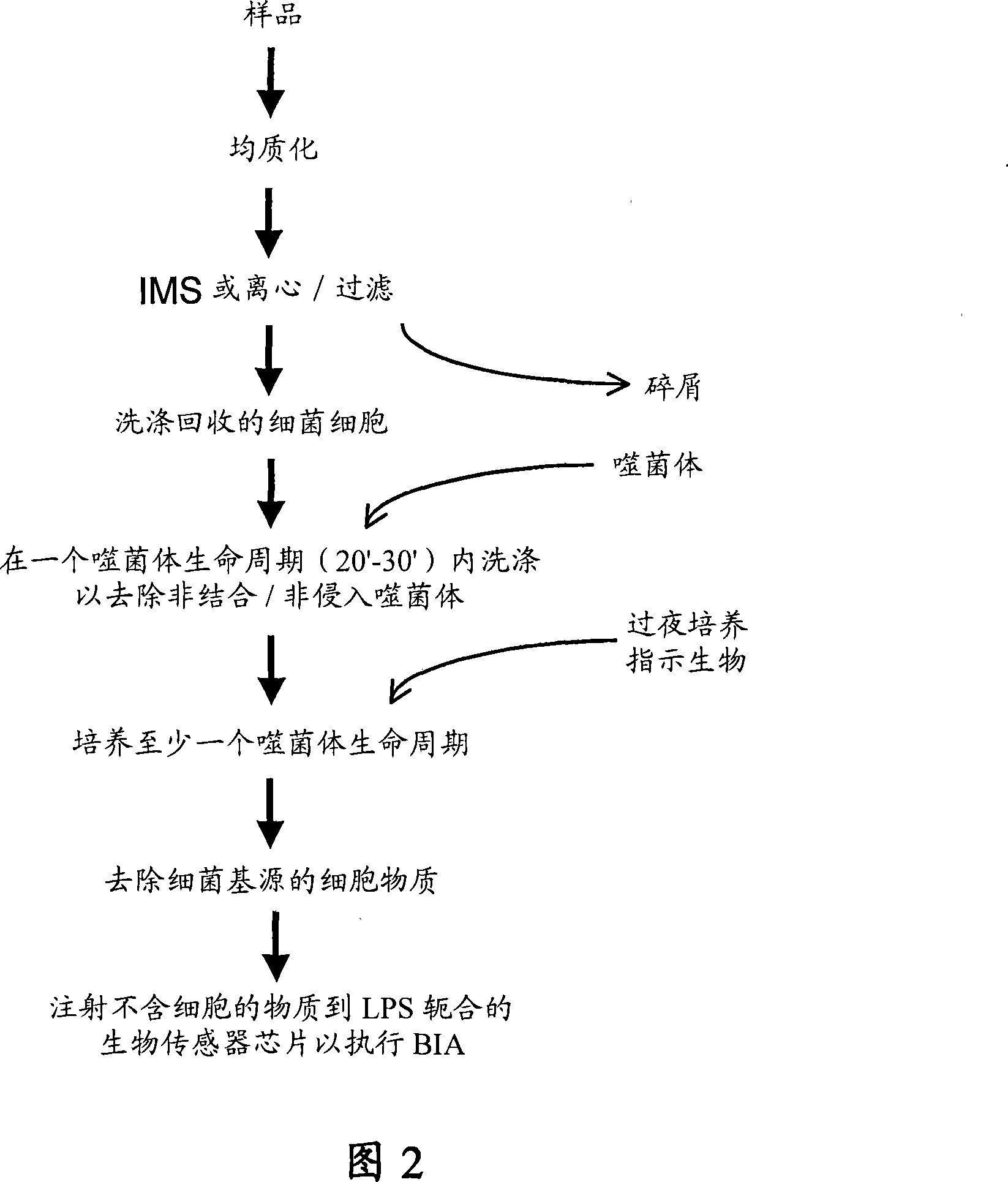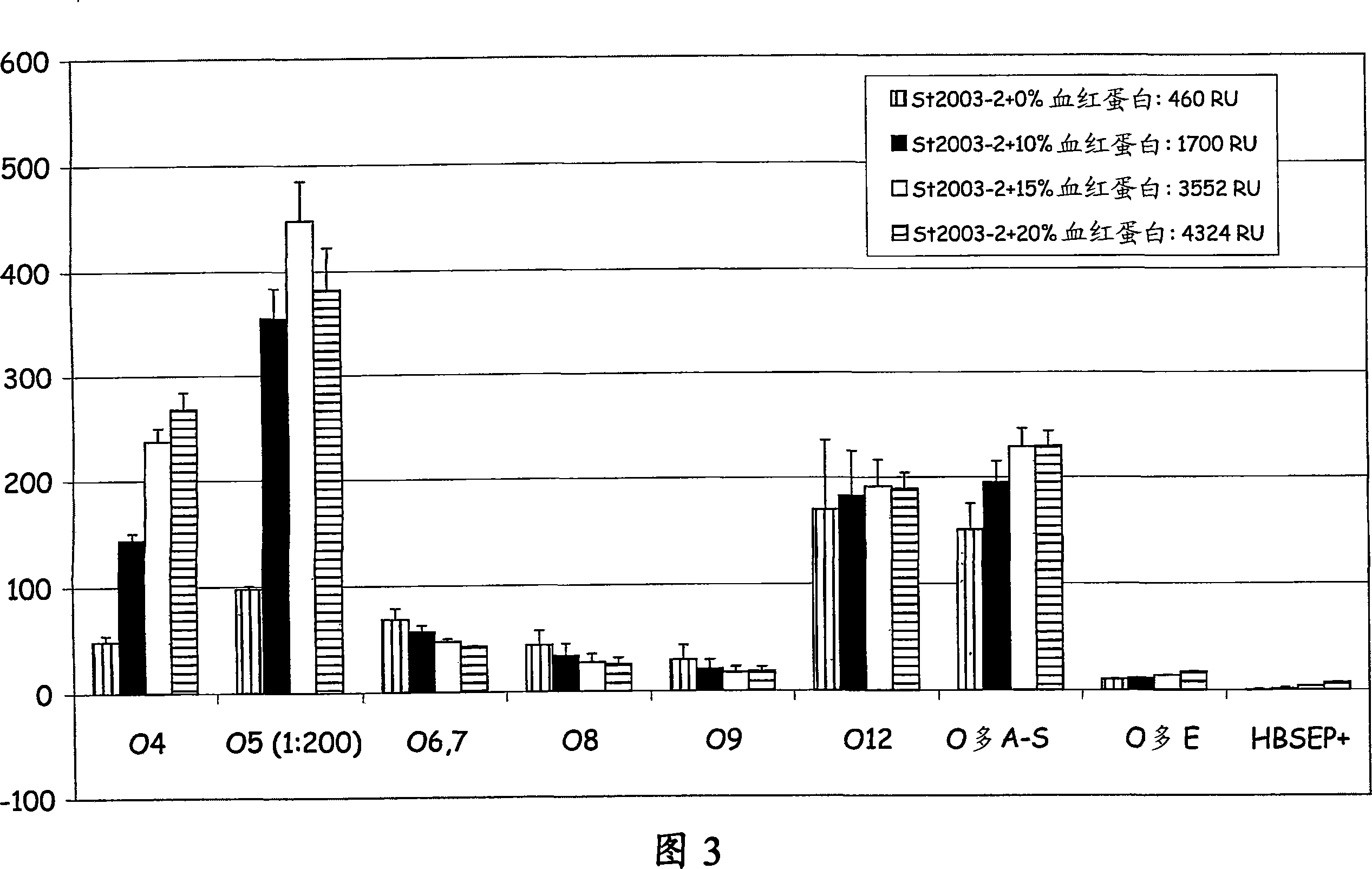Immobilisation of antigenic carbohydrates to support detection of pathogenic micro-organisms.
An antigen, biosensor technology, used in chemistry and diagnostics, that can solve the problems of laborious, cumbersome, and unsuitable for large-scale screening programs
- Summary
- Abstract
- Description
- Claims
- Application Information
AI Technical Summary
Problems solved by technology
Method used
Image
Examples
Embodiment 1
[0132] Materials and methods
[0133] 1.1 Materials
[0134] 1.1.1 Chemicals
[0135] Amine coupling kits were purchased from Biacore AB (Uppsala, Sweden), which also provided ready-to-use 10 mM glycine and 50 mM sodium hydroxide, the above-mentioned amine coupling kits included N-hydroxysuccinimide (NHS), 1- Ethyl-3-(3-dimethylaminopropyl)carbodiimide hydrochloride (EDC) and ethanolamine hydrochloride-sodium hydroxide (pH 8.5) and running buffer (HBS-EP), the flow The buffer contained 10 mM HEPES, 150 mM sodium hydrochloride, 3 mM EDTA and 0.005% (v / v) surfactant P20 (pH 7.4). Ethanol, ethylene glycol, sodium chloride, sodium hydroxide and trichloroacetic acid (TCA) were purchased from Merck (Darmstadt, Germany). Carboxymethylated dextran sodium salt, sodium cyanoborohydride and carbohydrazide were obtained from Fluka Chemie GmbH (Buchs, Switzerland). CHAPS (Plus one) was supplied by Pharmacia Biotech (Uppsala, Sweden). Sodium acetate trihydrate and acetic acid were ...
Embodiment 2
[0271] introduction
[0272] SPR biosensor for detection of yolk antibodies reflecting Salmonella Enteritidis infection [AAB4]
[0273] Salmonella is one of the main causes of bacterial gastroenteritis in humans (Fischer, 2004; van Duynhoven et al., 2005). In the Netherlands, Salmonella Enteritidis serovar (S.e.) was the most frequently isolated serovar between 1994-1998 (Pelt et al., 1999). Within this serovar, eggs and egg products are the most important sources of infection. Despite several control measures, approximately 9% of the Dutch spawning hen flock is still infected each year. Because egg contamination with Salmonella remains a public health threat, it is important that hen flocks be detected for infection as quickly as possible through an appropriate surveillance program.
[0274] The current monitoring system in the Netherlands for grow-out hens during the laying period is based on serum profiles (Bokkers, 2002). The aim is to reduce the prevalence of S.e. and...
Embodiment 3
[0343] introduction
[0344] Direct detection of Campylobacter spp. using LPS-coated beads and monitoring phage infection.
[0345] In developed countries, Campylobacter is the most common foodborne pathogen causing gastroenteritis characterized by watery and / or bloody diarrhea. Campylobacter has been associated with Guillain-Barr syndrome (GBS), Reiter syndrome, and hemolytic uremic syndrome (HUS), as well as reactive arthritis (FSAI, 2002; Lake et al., 2003; Tauxe, 2000). In the last 20 years, the rate of Campylobacter infection has continued to increase in many developed countries, perhaps due to improvements in detection and reporting. In the United States, 2,400,000 cases of campylobacteriosis are reported annually, which corresponds to approximately 1% of the US population (Tauxe, 2000).
[0346] Wild birds and domestic animals are reservoirs of Campylobacter and shed the bacteria into the environment. Poultry are important vectors of Campylobacter infection in humans...
PUM
| Property | Measurement | Unit |
|---|---|---|
| diameter | aaaaa | aaaaa |
Abstract
Description
Claims
Application Information
 Login to View More
Login to View More - R&D
- Intellectual Property
- Life Sciences
- Materials
- Tech Scout
- Unparalleled Data Quality
- Higher Quality Content
- 60% Fewer Hallucinations
Browse by: Latest US Patents, China's latest patents, Technical Efficacy Thesaurus, Application Domain, Technology Topic, Popular Technical Reports.
© 2025 PatSnap. All rights reserved.Legal|Privacy policy|Modern Slavery Act Transparency Statement|Sitemap|About US| Contact US: help@patsnap.com



